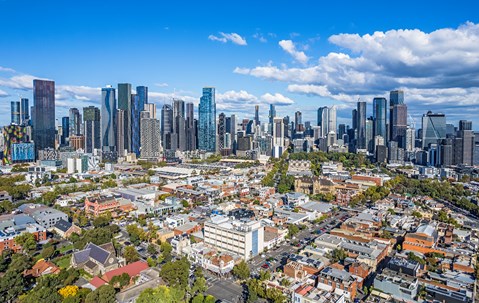News & Tips

Sorry Melbourne, Mark Twain Was Right, There Is No More Land
“Buy land. They’re not making it anymore.”
The famous quote attributed to Mark Twain was not directed at property buyers living in Melbourne in 2023, but it is probably the best piece of advice they will ever get. Because Melbourne is, indeed, running out of land.
A new analysis by Oliver Hume shows that by the early 2040s, around 20 years from now, metropolitan Melbourne and Geelong will have, effectively, no more new residential land available.
On current policy settings, most, if not all, of the broader market’s large-scale, formally planned future land releases are expected to have been absorbed by a rapidly growing population.
Our modelling of current and future land supply releases from residential Precinct Structure Plans (PSPs) vis-à-vis underlying demand shows that the amount of land available steadily declines over the next two decades.
Indeed, our forecasts could be interpreted as quite cautious, given our conservative assumptions.
One of these conservative assumptions is that all the unprogrammed PSPs in our study area are eventually approved and included in the supply pipeline.
Current policy settings, including the Victorian Government’s recent Housing Statement, suggest this will not happen as policymakers attempt to force densification.
Another conservative assumption is that all PSPs are prepared and delivered relatively quickly after approval.
Previous experience suggests, however, that we can expect considerable delay. This is especially the case where complex issues must be addressed and resolved.
Our analysis suggests that, as we enter the second precarious decade of dwindling land supplies, the market will become increasingly (and spectacularly) tight.
The amount of stock available, relative to the total pipeline, will continue to decline.
It is likely that, in this second decade, we could see sharp increases in land and property prices over and above what we have seen in previous cycles.
We could see significant growth in land values over the coming decade, given Australia’s record housing shortage and affordability crisis, which, given current trends, is expected to deteriorate.
Then again, it could be a little dramatic to paint a picture of buyers standing around in some outer suburb in December 2043, paddles in hand, ready to bid on Melbourne’s “last ever” block of land.
Over the next 20 years, a range of factors (including policies, demographics and buyer preferences) could change, averting a land and broader property market crisis.
But until the required changes are made to ensure demand and supply are better matched, we must operate on the assumption that we could be in for several years, if not decades, of growing pressures on the residential property market.
By George Bougias,
Oliver Hume,
National Head of Research

